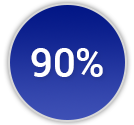-
Corporate

Corporate Solutions

The digital learning ecosystem An efficient management approach to capability development, delivering smarter teams, improved productivity and better business outcome for the managers.
PetroChallengeBridging industry with academia An immersive and collaborative learning experience event, using OilSim simulator, providing highly relevant industry knowledge and soft skills.
-
Individual

Individual Solutions

The digital learning ecosystem Digitally and seamlessly connecting you, the learner, with pertinent learning objects and related technologies ensuring systematic, engaging and continued learning.
RecognitionsIndustry and client recognition
Best Outreach Program Finalist: WorldOil Awards
Overall Customer Satisfaction Score
Training provider of the year: 2013, 14 and 15
-
Courses
- Exploration
- Reservoir Engineering
- Petrophysics
- Delfi
- Information Management
- eLearning
- Production Engineering
- Surface Facilities
- Field Development Planning
- Economics and Finance
- Multi-Discipline
- Deepwater
- Drilling Engineering
- CCS/CCUS Academy
- Geomechanics
- Unconventional Resources
- Geosolutions
- Software Development
- Geology
- Geophysics
-
Exploration: Play and Prospect Definition
31 Courses |
181 Days
-
Petrel
30 Courses |
100 Days
-
Structural Geology and Tectonics
23 Courses |
110 Days
-
Field Appraisal and Development
21 Courses |
150 Days
-
Quantitative Seismic Interpretation
22 Courses |
201 Days
-
Structural and Stratigraphic Interpretation
18 Courses |
89 Days
-
Geophysical Data Processing
16 Courses |
82 Days
-
Geophysics
15 Courses |
141 Days
-
Open Hole Log Interpretation
20 Courses |
105 Days
-
Reservoir Petrophysics
18 Courses |
101 Days
-
Cased Hole Log Interpretation
13 Courses |
60 Days
-
Petrophysics
2 Courses |
20 Days
-
Drilling
11 Courses |
56 Days
-
Unconventional Reservoirs
10 Courses |
44 Days
-
Reservoir
8 Courses |
43 Days
-
Management & Well Operations
33 Courses |
201 Days
-
Well Planning & Design
26 Courses |
117 Days
-
Drilling Technology
16 Courses |
95 Days
-
General Knowledge
3 Courses |
20 Days
-
Reservoir Management
28 Courses |
127 Days
-
Reservoir Analysis
20 Courses |
85 Days
-
Reservoir Characterization
19 Courses |
82 Days
-
Reservoir Simulation
7 Courses |
30 Days
-
Well Completions
35 Courses |
136 Days
-
Well Performance
22 Courses |
108 Days
-
Artificial Lift
19 Courses |
99 Days
-
Well Intervention
18 Courses |
102 Days
-
Surface Facilities Engineering
39 Courses |
193 Days
-
Maintenance and Reliability
12 Courses |
60 Days
-
General
4 Courses |
19 Days
-
Data Quality Management
4 Courses |
12 Days
-
Rotating Equipment
7 Courses |
23 Days
-
Piping and Pipelines
5 Courses |
20 Days
-
Prime Movers and Drivers
4 Courses |
15 Days
-
Static Equipment
4 Courses |
14 Days
-
Utility and Water Injection Systems
16 Courses |
41 Days
-
Oil Systems
9 Courses |
23 Days
-
Gas Systems
7 Courses |
17 Days
-
Control Room and Laboratory
5 Courses |
16 Days
-
Control Systems
8 Courses |
25 Days
-
Process Measurement
5 Courses |
19 Days
-
Instrumentation Equipment & Installations
4 Courses |
14 Days
-
ESD and PSD Systems
3 Courses |
11 Days
-
Electrical Installation
8 Courses |
22 Days
-
Power Generation and Distribution
7 Courses |
20 Days
-
Primemovers and Drivers
2 Courses |
8 Days
-
Environmental Impact
8 Courses |
9 Days
-
Clean Technologies
7 Courses |
31 Days
-
Governance & Regulations
2 Courses |
2 Days
-
Sustainable Circular Economy
1 Courses |
2 Days
-
Geoenergy
1 Courses |
2 Days
-
New Energies Projects Scope Planning
15 Courses |
47 Days
-
New Energies Integration
4 Courses |
16 Days
-
CCS/CCUS Academy
6 Courses |
27 Days
-
Energy Transition Academy
1 Courses |
10 Days
-
AI Academy
4 Courses |
17 Days
-
Data Science
14 Courses |
63 Days
-
Data Science
17 Courses |
75 Days
-
Digital
4 Courses |
15 Days
-
Digital Technology
4 Courses |
17 Days
-
OilSim
1 Courses |
5 Days
-
eLearning
4 Courses |
20 Hours
-
Shale Gas - Shale Oil
22 Courses |
93 Days
-
Tight Gas
7 Courses |
34 Days
-
Coal Seam Gas
5 Courses |
21 Days
-
Heavy Oil
4 Courses |
15 Days
-
Petrophysics
13 Courses |
70 Days
-
Geology and Geophysics
10 Courses |
55 Days
-
Reservoir Engineering
9 Courses |
58 Days
-
Production Engineering
5 Courses |
30 Days
-
Geology
10 Courses |
48 Days
-
Other
4 Courses |
20 Days
-
Geophysics
4 Courses |
20 Days
-
Reservoir Characterization
4 Courses |
20 Days
-
Reservoir Management
2 Courses |
10 Days
-
Geoscience
2 Courses |
10 Days
-
OLGA
8 Courses |
35 Days
-
Drilling
4 Courses |
20 Days
-
Production
3 Courses |
13 Days
-
Reservoir Characterization - Classroom
2 Courses |
10 Days
-
General
23 Courses |
89 Days
-
Health and Safety
19 Courses |
43 Days
-
Environment
18 Courses |
77 Days
-
Health, Safety and Environment
16 Courses |
55 Days
-
Petroleum Economics
12 Courses |
47 Days
-
Risk and Uncertainty
6 Courses |
25 Days
-
Accounting and Finance
5 Courses |
20 Days
-
Communications
20 Courses |
73 Days
-
Contracts and Procurement
15 Courses |
61 Days
-
Business Strategy
14 Courses |
61 Days
-
Leadership
12 Courses |
43 Days
-
Project Management
21 Courses |
99 Days
-
Business Strategy
18 Courses |
83 Days
-
General Project Management
10 Courses |
48 Days
-
Costs, Risk and Uncertainty
7 Courses |
39 Days
-
Communications
10 Courses |
38 Days
-
Employability soft skills
8 Courses |
36 Days
-
Leadership and Management
7 Courses |
32 Days
-
Human Resources
2 Courses |
9 Days
Discipline

Learning Journey

Learning Journey

Learning Journey
Discipline

Learning Journey
Discipline

Learning Journey
Discipline

Learning Journey

Learning Journey
Discipline

Learning Journey

Learning Journey
Discipline

Upstream learning simulator With more than 50,000 participants instructed in various disciplines, data driven OilSim runs real-world oil and gas business scenarios and technical challenges.
Engaging. Educational. EnjoyableUpstream learning simulator With more than 50,000 participants instructed in various disciplines, data driven OilSim runs real-world oil and gas business scenarios and technical challenges.
Engaging. Educational. Enjoyable PetroChallenge
PetroChallengeBridging industry with academia An immersive and collaborative learning experience event, using OilSim simulator, providing highly relevant industry knowledge and soft skills.
- Exploration
- Reservoir Engineering
- Petrophysics
- Delfi
- Information Management
- eLearning
- Production Engineering
- Surface Facilities
- Field Development Planning
- Economics and Finance
- Multi-Discipline
- Deepwater
- Drilling Engineering
- CCS/CCUS Academy
- Geomechanics
- Unconventional Resources
- Geosolutions
- Software Development
- Geology
- Geophysics
-
About


The digital learning ecosystem Digitally and seamlessly connecting you, the learner, with pertinent learning objects and related technologies ensuring systematic, engaging and continued learning.
Contact UsWe’re here to help!
Ask a question or leave a
comment using our Contact Us
form.




 SLB Software
SLB Software
 Petrotechnical
Petrotechnical
 Operations and Maintenance
Operations and Maintenance
 Energy Transition
Energy Transition
 Artificial Intelligence
Artificial Intelligence
 Digital Technology
Digital Technology
 Digital Learning
Digital Learning
 Technical Challenges
Technical Challenges
 Health Safety and Environment (HSE)
Health Safety and Environment (HSE)
 Business Management
Business Management
 E&P Introduction and Fundamentals
E&P Introduction and Fundamentals
 Gamification
Gamification


 Virtual Instructor Led Training
Virtual Instructor Led Training